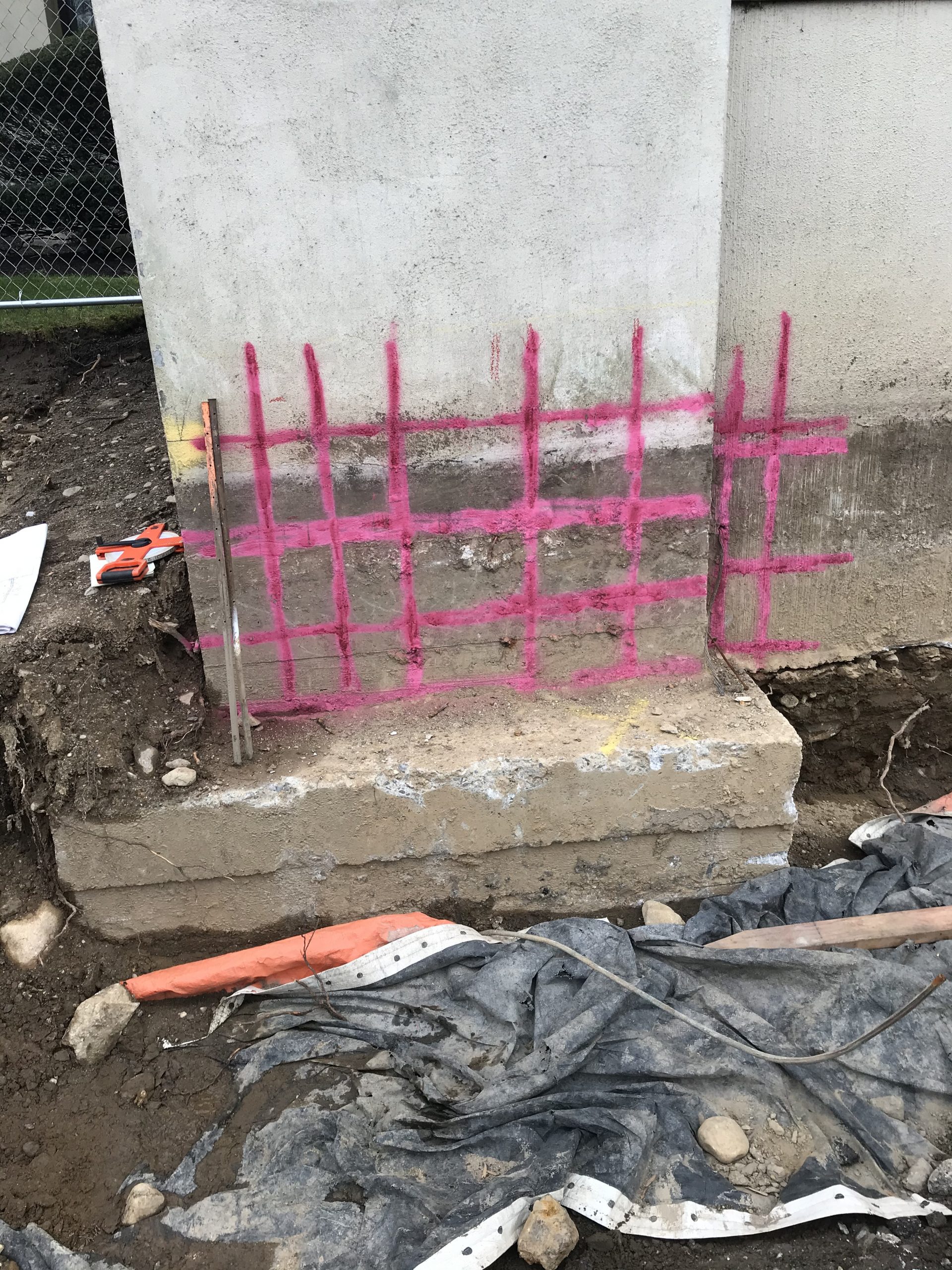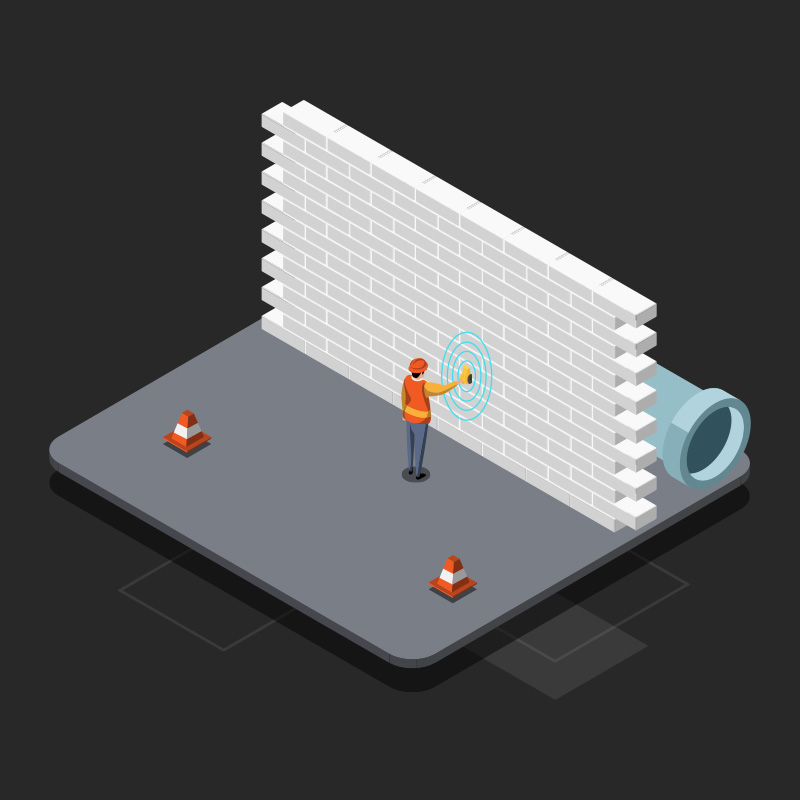Past the Surface Area: Leveraging Advanced Concrete Scanning Techniques for Unmatched Precision and Understanding
In the realm of building and infrastructure maintenance, the pursuit for precision and thoroughness is unending. Advanced concrete scanning strategies have become essential tools in this search, supplying a glimpse beneath the surface area to unveil a globe of crucial insights. By using sophisticated technologies, professionals can uncover anomalies, assess the problem of concrete structures, and make educated decisions that shape the course of tasks. The ramifications of these methods expand far past plain surface-level assessments, guaranteeing a deepness of accuracy and understanding that is unrivaled.
Relevance of Advanced Concrete Scanning
The importance of making use of advanced concrete scanning methods depends on the unrivaled accuracy they supply for detecting sub-surface anomalies and making sure architectural stability. By utilizing sophisticated modern technologies such as ground-penetrating radar (GPR), electromagnetic induction, and advanced sonar imaging, construction professionals can dive beneath the surface area of concrete structures with a degree of accuracy that much exceeds standard examination methods. Concrete Scanning. These strategies enable the recognition of covert threats like rebar rust, spaces, channels, or post-tension cable televisions that can endanger the security and security of a framework gradually
Moreover, advanced concrete scanning offers important insights right into the overall problem of a concrete aspect without the need for intrusive actions, decreasing the danger of causing damage throughout the analysis procedure. The capability to determine the precise area and deepness of prospective issues enables targeted fixings and maintenance, ultimately extending the life-span of the framework and enhancing its efficiency. Basically, the importance of sophisticated concrete scanning can not be overstated in the world of building and construction and facilities upkeep, where precision and reliability are vital.
Kinds of Cutting-Edge Technologies

Anomalies and Flaw Discovery

In addition to GPR, concrete scanning techniques like thermography and impact-echo testing are likewise efficient in detecting issues and abnormalities. Thermography makes use of infrared innovation to determine variations in surface area temperature, suggesting potential areas of problem such as delamination or dampness ingress. On the various other hand, impact-echo testing entails click over here now evaluating acoustic feedbacks to spot gaps, fractures, and other issues within the concrete. By leveraging these advanced strategies, specialists can proactively deal with structural problems, ensuring the longevity and safety of concrete frameworks.
Assessing Concrete Problem
How can designers precisely review the condition of concrete frameworks to ensure their long life and security? Different sophisticated concrete scanning techniques are employed for this function. Ground-penetrating radar (GPR) is commonly utilized to evaluate the inner structure of concrete, identifying gaps, splits, and various other anomalies that may compromise its strength.
Incorporating non-destructive screening methods with visual assessments permits for an extensive assessment of concrete condition, enabling designers to determine possible issues early Read Full Article on and implement prompt upkeep or repair services. By leveraging these sophisticated methods, designers can make certain the lasting resilience and safety and security of concrete structures.
Enhancing Decision-Making Procedures
In the realm of facilities monitoring, enhancing decision-making procedures is critical for guaranteeing the effective upkeep and durability of concrete frameworks. Improved decision-making processes in concrete monitoring include making use of innovative scanning methods to collect thorough information on the problem of frameworks. By leveraging modern technologies such as ground-penetrating radar and 3D imaging, stakeholders can make informed choices regarding repair work, support, or substitute techniques.
These advanced scanning methods provide invaluable insights right into the inner make-up of concrete, determining possible concerns such as spaces, splits, or deterioration that may not be noticeable on the surface area. This degree of thorough details enables proactive maintenance planning, lessening the danger of structural failures and increasing the overall lifespan of concrete frameworks.
Furthermore, by including digital documents and analysis devices right into the decision-making process, stakeholders can track the evolution of concrete conditions in time, allowing anticipating upkeep techniques and enhancing resource allocation. Ultimately, the assimilation of innovative concrete scanning methods improves decision-making procedures by giving unparalleled accuracy, understanding, and efficiency in infrastructure monitoring.
Conclusion
Finally, next advanced concrete scanning methods use exceptional accuracy and understanding in spotting abnormalities, defects, and examining the problem of concrete structures. By leveraging cutting-edge modern technologies, decision-making procedures can be enhanced, resulting in more enlightened and efficient solutions for maintaining and fixing concrete framework. These methods play a crucial role in guaranteeing the safety and durability of concrete frameworks, making them a crucial tool in the area of building and construction and engineering.
Additionally, advanced concrete scanning gives indispensable understandings into the total problem of a concrete element without the need for intrusive measures, lessening the danger of creating damage throughout the evaluation procedure - Concrete Scanning. Another ingenious innovation is 3D X-ray scanning, which provides thorough photos of the internal framework of concrete, supplying useful details without the requirement for devastating screening. Additionally, Concrete Cover Meters are used to determine the thickness of concrete cover over reinforcement bars properly. Enhanced decision-making processes in concrete management include using advanced scanning methods to collect comprehensive data on the problem of frameworks.In final thought, advanced concrete scanning techniques provide unmatched accuracy and insight in finding abnormalities, flaws, and analyzing the problem of concrete frameworks